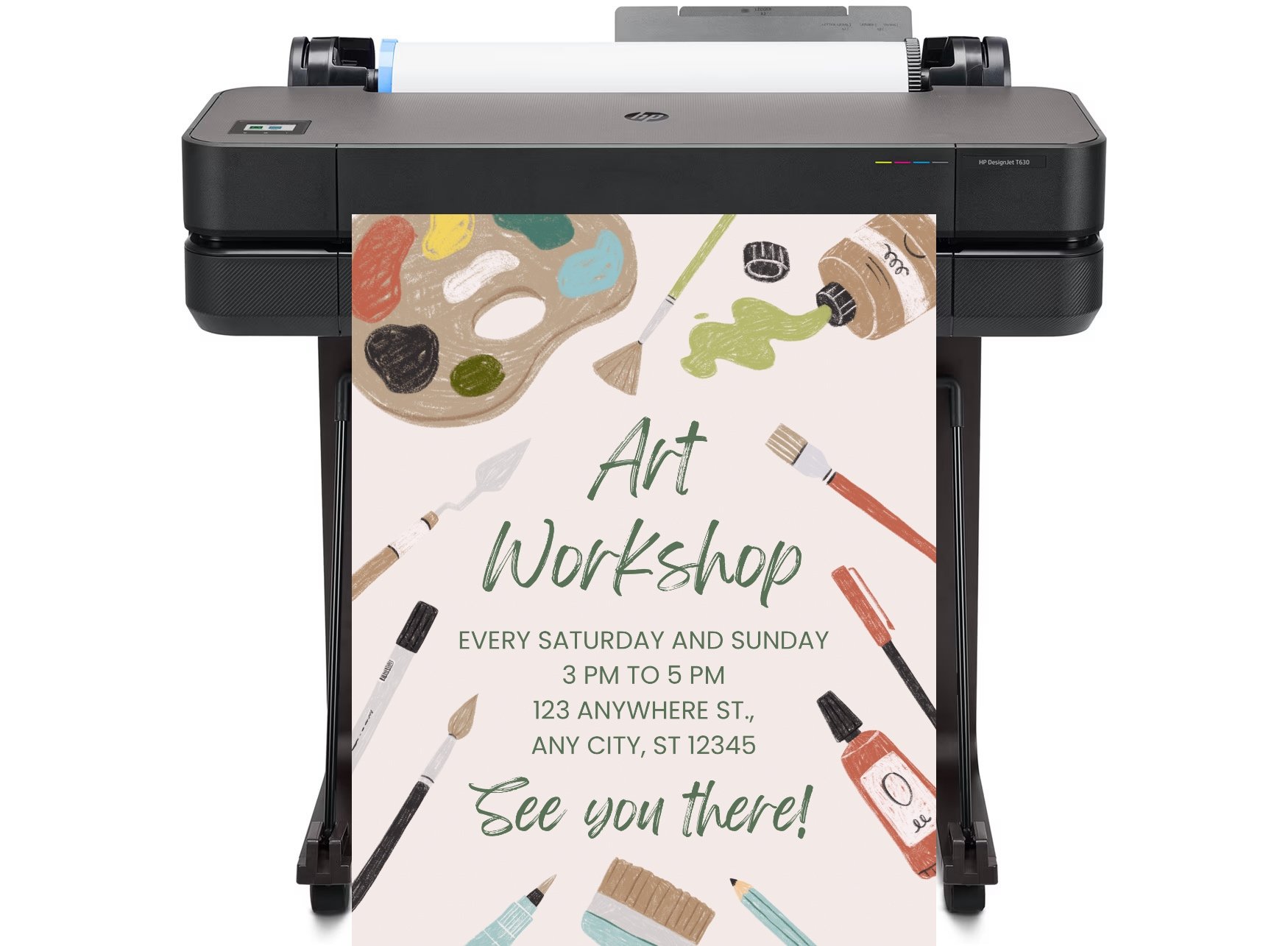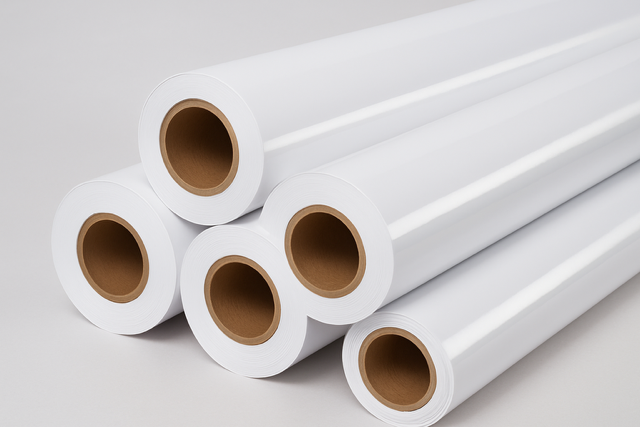
DISCOUNTED EDUCATION PRICING! CALL 1-877-891-8411. We Gladly Accept School Purchase Orders!

Selecting the right paper finish for your poster can transform your design from ordinary to extraordinary. The choice between matte, coated, and glossy paper impacts not only the visual appeal but also the durability, cost, and overall effectiveness of your poster. Whether you’re creating a stunning art print, a vibrant marketing poster, or a bold promotional sign, understanding the nuances of these finishes is essential. This in-depth guide compares matte, coated, and glossy poster paper across aesthetics, durability, cost, and ideal applications, with practical tips to help you make the best choice. Let’s dive in and explore how to make your poster truly stand out!
Before we compare, let’s clarify what each finish entails:
Each finish has distinct characteristics, so let’s evaluate them across key factors to guide your decision.
Matte poster paper exudes elegance with its soft, non-reflective surface. By minimizing glare, it ensures your design is visible in various lighting conditions, making it ideal for galleries, offices, or homes. Colors appear softer and more nuanced, enhancing the depth of intricate designs or photography with subtle gradients. For instance, a matte finish can give a black-and-white art print a timeless, velvety quality, emphasizing texture without distractions. However, vibrant colors may appear slightly muted compared to glossier options.
Coated poster paper offers a polished look with a slight sheen that boosts color vibrancy without the intense reflectivity of glossy paper. It’s a versatile choice for designs that need to stand out while maintaining a professional edge, such as event posters or business promotions. The coating smooths the paper’s surface, enhancing detail clarity and giving prints a refined appearance. With varying sheen levels, you can tailor the finish to your aesthetic vision.
Glossy paper is the go-to for bold, vibrant designs. Its shiny surface reflects light, making colors pop with intensity and creating a dynamic, eye-catching effect. This finish excels for concert posters, retail ads, or any design meant to grab attention. However, the reflective nature can cause glare in bright environments, potentially affecting readability. Glossy finishes demand high-quality designs, as the shine highlights every detail, including any imperfections.
Winner for Aesthetics: Depends on your vision. Matte for elegance, coated for versatility, glossy for bold impact.
Without a protective coating, matte paper is more susceptible to smudges, fingerprints, and scratches, making it less durable in high-traffic areas. However, when framed or displayed in low-contact settings, matte paper can maintain its quality over time, especially with archival inks. It’s best suited for controlled environments where handling is minimal.
The sealant on coated poster paper adds a protective layer, improving resistance to smudges, minor scratches, and UV fading. This makes it a solid choice for posters in public spaces or those handled frequently, like event signage. The coating enhances longevity without sacrificing the balance of aesthetics and practicality.
Glossy poster paper is the most durable, thanks to its robust coating. It resists smudges, fingerprints, and moisture, making it ideal for outdoor or semi-outdoor displays when laminated. While scratches may be more visible on the shiny surface, glossy paper’s overall toughness makes it a top pick for high-exposure settings.
Winner for Durability: Glossy leads for its protective coating, followed by coated paper. Matte is best for low-contact displays.
Matte paper is typically the most budget-friendly option due to its simpler manufacturing process. It’s ideal for large print runs or projects with tight budgets, such as community event posters or temporary displays, without compromising on a professional look.
Coated paper falls in the mid-range price category. The added coating process increases costs slightly, but it remains affordable for most projects. It’s a cost-effective choice for those seeking a balance of quality and durability, like small businesses or event organizers.
Glossy paper is generally the priciest due to its specialized coating and production requirements. The premium cost is often justified by its vibrant output and durability, making it worth the investment for high-impact marketing or promotional materials.
Winner for Cost: Matte for budget-conscious projects, coated for balanced value, glossy for premium results.
Winner for Use Cases: Coated paper is the most versatile, but matte shines for elegance, and glossy excels for bold promotions.
Matte poster paper absorbs more ink, which can soften colors but enhance texture. It’s forgiving for lower-resolution images, as the non-reflective surface hides minor flaws. However, bold designs may need extra care to avoid looking flat, so high-quality inks and printers are recommended. Your posters are only as good as the poster paper it is printed on.
The coating ensures inks sit on the surface, producing sharper details and more vibrant colors. It’s less forgiving than matte, so high-resolution designs (300 DPI or higher) and professional printing are crucial to avoid visible imperfections.
Glossy paper requires top-tier design and printing quality. The reflective surface magnifies every detail, so low-resolution images or subpar printing can result in noticeable flaws. Use high-DPI images and professional printers to ensure crisp, vibrant results.
Pro Tip: Always test your design on a sample sheet of your chosen paper to confirm colors, clarity, and overall impact before committing to a full print run.
Matte paper is often the most eco-friendly, requiring fewer chemicals in production. Coated and glossy papers involve additional coatings, which can increase resource use and environmental impact. For sustainable projects, opt for recycled matte paper or eco-certified coated/glossy options to minimize your footprint while maintaining quality.
The choice of paper finish also affects how your poster looks when framed or displayed. Matte paper pairs beautifully with frames, as its non-reflective surface ensures the focus remains on the design, not the glass. It’s a favorite for gallery-style presentations or minimalist decor. Coated paper works well in both framed and unframed settings, offering a professional look that complements modern or corporate environments. Glossy paper, while stunning unframed for bold displays, can be tricky in framed settings due to potential glare under glass. Consider anti-glare glass or UV-protective framing for glossy posters to maintain their vibrancy and protect against fading.
To select the perfect finish, consider these questions:
The choice between matte, coated, and glossy poster paper hinges on your project’s purpose, environment, and budget. Matte offers timeless elegance and affordability, ideal for art prints and indoor displays. Coated paper provides a versatile balance of vibrancy and durability, perfect for professional marketing materials. Glossy paper delivers bold, attention-grabbing results, best for promotional or high-contrast designs. By weighing aesthetics, durability, cost, and use case, you can select the finish that elevates your poster to the next level. Test your design on a sample, choose your paper wisely, and let your vision shine!